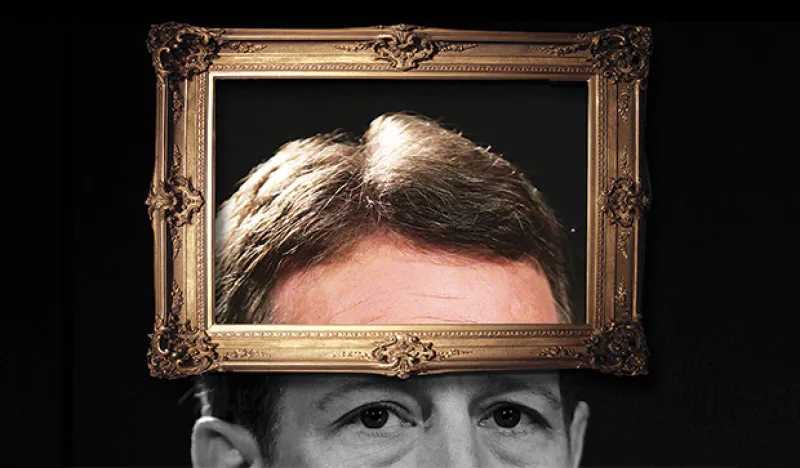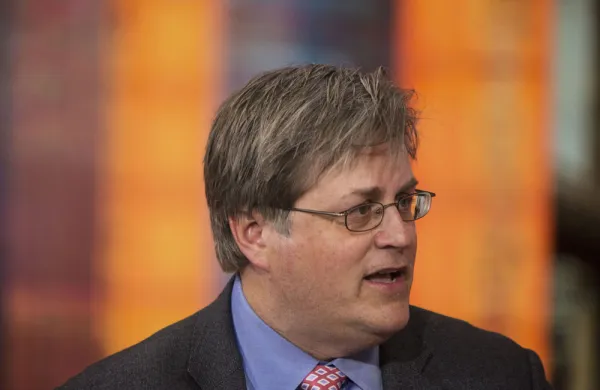
Illustration by Nicolas Ortega.
Whitney Tilson's Facebook friends surely thought he was on top of the world last summer. Photo after photo posted on the social media site tells the story of a rich, exciting life: There's Tilson watching whales off the coast of Iceland. Next, he's on the canals of Amsterdam with his wife and daughter. Just a few days later, he's checking out Lenin's tomb in Moscow. Last August he even climbed to the top of the famed Eiger mountain in the Swiss Bernese Alps, photographing every step of the arduous journey.
But to hear Tilson talk today, the reality was grim. After 18 years in the hedge fund business, his firm — Kase Capital Management — was losing money, and Tilson found himself dipping into his savings to keep it afloat.
"I had lost my passion for the game," Tilson confided in a two-hour, soul-searching interview about the events that led him to shut down his hedge fund last September. After gaining 184 percent, net — when the broader market was up only 3 percent — during the first 11 and a half years of his hedge fund's existence, Tilson's returns had been floundering. Since 2010, Tilson says, he trailed the Standard & Poor's 500 stock index, and in 2017 he had lost almost 9 percent on the year by the time he shut down his fund. "In an ironic twist, I always built my firm to survive the worst storm, but it was a nine year bull market — complacency and sunshine — that took me out."
Tilson is one of several veteran hedge fund managers, including Eton Park Capital Management's Eric Mindich, Hutchin Hill Capital's Neil Chriss, Eclectica Asset Management's Hugh Hendry, and Blue Ridge Capital's John Griffin, who called it quits in 2017. Small hedge funds come and go with great regularity, but the inability of the industry's stars to profit as the stock market soared to new heights has raised questions about the viability of the model. Tilson was a much smaller player than the others — at his peak he managed only $200 million — but his experiences are a window into the headwinds that have faced these former masters of the universe.
What distinguishes Tilson from many of his peers is his willingness to talk about the long, excruciating road down. "It's hard, after seven years at sucking at something, to wake up and tap-dance to work. So, I found myself getting distracted. I wasn't physically getting out of shape; it was the opposite. I was going and climbing mountains. This one part of my life, I was miserable at; I was having no success. It's hard to have the self-discipline to focus all your attention like a laser, and all your spare time on a particular part of your life in which you're getting so much negative reinforcement."
Last year, as his fund's losses began to mount, Tilson says, "I didn't feel like I could look my investors in the eye and say, "˜Look, I'm losing you money, but I'm not doing anything else, 18 hours a day that I'm awake, the only thing I am doing is trying to turn performance around.' " The vacation photos notwithstanding, Tilson says he even felt guilty attending his daughter's soccer games. "My hedge fund was sucking all the joy out of my life."
Tilson's introspection is uncommon for those in the hedge fund business, where selfconfidence and salesmanship are as important to success as any investing prowess. As Tilson readily admits, managers cannot afford to be frank while they are going through turmoil, lest they further hurt their business — and their investors. "The last thing you want to do is air your dirty laundry. That will further shake the confidence of your investors."
But there's another reason for Tilson's uncommon openness: His experiences, both positive and negative, have led him to create a whole new business, turning Kase Capital into Kase Learning (Kase stands for the first letters of the names of Tilson's wife and three daughters). From a small conference room at the New York Athletic Club, Tilson has started teaching the perils and profits of investing in general — and running a hedge fund specifically — to aspiring youngsters who don't come out of big seeding platforms like Julian Robertson's Tiger Management or a multibillion-dollar hedge fund.
"Unless you are the lucky 1 percent who has the chance of learning in an apprenticeship, how are you supposed to learn how to do this?" Tilson says. "Nobody teaches the next generation. There is not one business school on the planet that teaches anything really usable to starting up your own hedge fund.
"It's so rare to talk to a manager who is injected with truth serum, isn't it?" he asks as he details his long bumpy journey through hedge fund land. "But I don't give a crap anymore."





